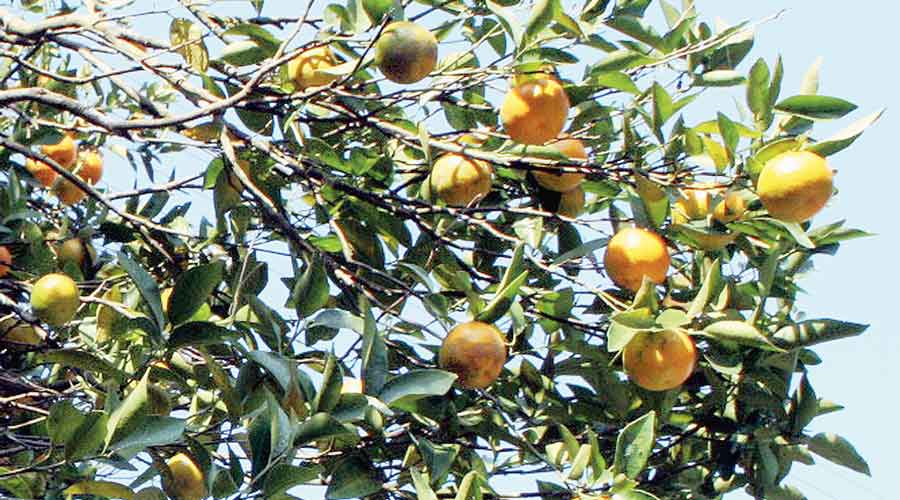The Spice Board of India, along with a research centre of North Bengal University and the Siliguri Horticultural Society, has drawn up a plan to encourage cultivation of oranges and flowers in the hills and plains of Siliguri subdivision.
During a two-day seminar on the occasion of the North Bengal Flower Show at the Kanchenjunga Stadium Mela Ground here, which ended on Sunday, officials of the board’s office in Gangtok and experts of the research centre offered subsidies to orange growers of the region, along with expertise, to increase production of the fruit in the hills.
Rama Lingam, a deputy director of the spice board posted in Gangtok, said along with spices like cardamom and ginger which grow in the hills and are in demand in domestic and international markets, they also sought to encourage local fruits like oranges. “Those who are into orange cultivation can contact us for suggestions and help. We can also provide them subsidies to the tune of 90 per cent of their cultivation cost,” he said.
Over the years, the production of oranges in the hilly areas of Darjeeling and Kalimpong districts have declined owing to reasons such as pest attack, poor farming practices and changes in climate.
A rough estimation shows that around 10 years back, around two-and-a-half lakh quintals of the fruit were produced in the hills. The number has come down to 30,000 quintals or even fewer.
“Farmers from Kalimpong and Darjeeling were at the seminar to discuss the current situation of Darjeeling oranges. The process of the revival of oranges was elaborately discussed in the seminar,” said a source.
Growers can use the expertise of the spice board and the Centre for Floriculture & Agri-Business Management (Cofam) of the North Bengal University.
A wholesale fruit merchant in Siliguri said the oranges of Darjeeling could not compete in the market with the fruits which reach here from Nashik and some other places. “Usually, the oranges of Nashik are sold at Rs 70 a kilo and those of Darjeeling at Rs 120. Growers here should keep production cost low,” he said.
At the seminar, speakers also stressed on cultivation of flowers in the region. Amrendra Kumar Pandey, the practical demonstrator of Cofam, said there is a steady demand for both cut and loose flowers. “Demand for flowers like tuberose, gerbera, chrysanthemum, marigold and a variety of roses is steady in the region and in other parts of Bengal. A number of farmers are making good earnings. We want more people to join in floriculture and are ready to offer them necessary expertise,” said Pandey.
Among the 1,500-odd farmers who grow flowers, some in hilly areas have also started growing tulips and daffodils, he said.
“We plan to introduce new species like Asian lilies,” Pandey added.











